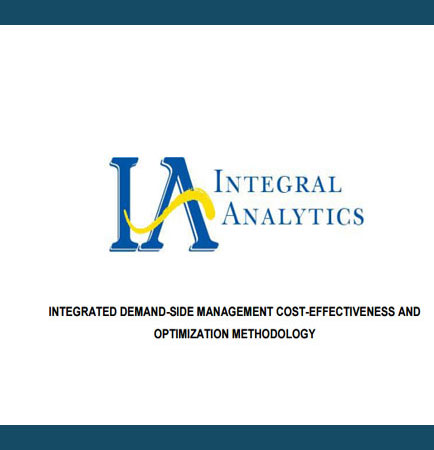
PROCESSING. PLEASE WAIT...


White Paper: INTEGRAL ANALYTICS
Across the U.S., demand-side management (DSM)4 activities, budgets and programs continue to grow in importance and to increase in overall magnitude in response to state and national policy. The effectiveness of these programs can benefit greatly from better integration and optimization in planning and operations. In the smart grid context, both the optimal integration and the full valuation of DSM cost-effectiveness (CE) have been challenging and difficult to achieve.5 Important interactive effects between measures and full optimization have been difficult to quantify, which in the long run cause poor investment decisions, misalignments, lost opportunities, and stranded benefits. This paper contends that much greater planning and operational efficiency (and resulting benefits) can be captured through robust valuation and optimization of the grid and the full integrated DSM (IDSM) portfolio, which will in turn show greater business case opportunities. Water related benefits, including embedded-energy-in-water, can also be further integrated and optimized. A critical outcome of better integration and optimization is to effectively and systematically optimize consumer engagement, with corresponding cost reductions.

By: Cogniance
Disruption used to mean a true shift in the market that blew minds and emptied walls. Disruption may be a waning model for innovation, but there’s a pot of proverbial gold on your product roadmap- and they’ve been there the whole time. This whitepaper explores why a user-focused, design-led mentality for technology products delights markets and satisfies that picky user in all of us. Key takeaways from this whitepaper: What’s being called “disruption” is really a dressed-up version of imitation How the user perspective turned airbnb around “What is” should lead to “what if” It’s time to get started. Bring your designers into the process early. Run tests!
By: Signavio
An enterprise-wide process modeling is the most agile way to conduct a successful digital transformation as it requires a top-down examination of the performance, quality and sustainability. Digital transformation is an essential step in the evolution of many businesses today. Process modeling has grown from creating a diagram or report figure that explains a business problem to a transformational practice that can organize the way a business is monitored, controlled, and measured. This whitepaper discusses why businesses should consider an enterprise-wide process modeling approach for competing through digital transformation. Key takeaways of this white paper: Take Process Models out of isolation within your business Nurturing digital business transformation by focusing on your process From business process mapping to enterprise business process modeling Ways to instigate enterprise-wide process modeling


 2026 All Rights Reserved | by: www.ciowhitepapersreview.com
2026 All Rights Reserved | by: www.ciowhitepapersreview.com